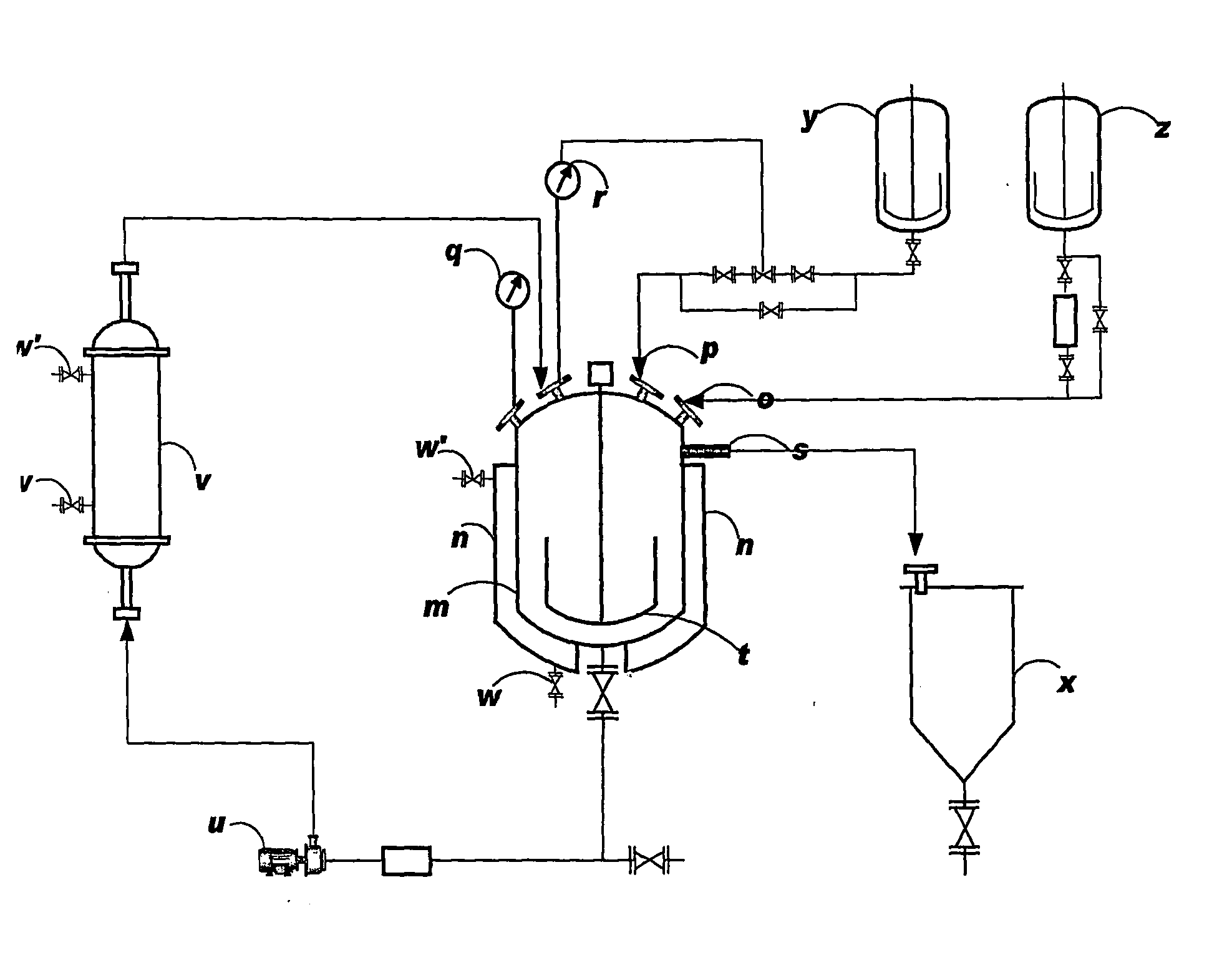Continuous Neutralizer Mixer Reactor and a Continuous Process for Quenching Chlorination Reaction Mixture in Production of Chlorinated Sucrose
a technology of chlorinated sucrose and mixer reactor, which is applied in the direction of liquid-liquid reaction process, sugar derivate, esterified saccharide compounds, etc., can solve the problems of affecting the tgs content of chlorinated mass, the mixing of solution is not perfect,
- Summary
- Abstract
- Description
- Claims
- Application Information
AI Technical Summary
Problems solved by technology
Method used
Image
Examples
example 1
Chlorination of Sucrose-6-Acetate Using Thionyl Chloride
[0018]400 L of DMF was charged into a Glass Lined reactor and 16 kg of carbon was added and mixed thoroughly. The nitrogen sparging was started and 344 L of thionyl chloride was added dropwise to the reactor. The temperature was maintained below 40° C. After the completion of addition of thionyl chloride, the mass was held at 35-40° C. for the reaction completion. Then the mass was cooled to 0-5° C. and 80 kg of 92% 6-acetyl sucrose in DMF (300 L) was added to it dropwise. The temperature was controlled below 5° C. and after the completion of addition of 6-acetyl sucrose, the mass was allowed to attain room temperature and was stirred at 30° C. for 3 hours. Then the mass was heated to 85° C. and maintained for 60 minutes and again heated to 100° C., maintained for 6 hours and further heated to 114° C. and maintained for 90 minutes.
[0019]The chlorinated mass was then cooled to 60° C. and was taken for neutralization.
example 2
Neutralization of Chlorinated Mass in Continuous Quenching System
[0020]150 L of DMF and 30 L of 25% ammonia solution in water was charged to the Continuous Neutralizer reactor. This solution was continuously circulated through the heat exchanger loop and was cooled to 10° C.
[0021]Addition of the chlorinated mass (˜950 L containing 28 kg 6-acetyl TGS) was started at a flow rate of 120 L / hr through a dip pipe arrangement. The reactor was also connected to a 7% ammonia solution tank through which the ammonia solution also was added simultaneously to the reactor. Temperature through the loop cycle was running continuously and was maintained at 20° C. The pH was monitored online and was controlled between 7.0-7.5 by the flow of the ammonia solution.
[0022]The quenched mass was collected through the overflow point provided in the reactor. The total quenched mass volume obtained was about 2500 L in 8 hrs. from a chlorinated reaction mass of 900 liters. The capacity of the neutralizer mixer ...
example 3
Comparison with Conventional Batch Quenching System
[0029]150 L of DMF and 500 L of 7% ammonia solution in water were charged to the Batch Neutralizer reactor. The temperature of the reactor was maintained at −5° C. The reactor was equipped with a pH sensor and the chlorinated mass (˜950 L containing 28 kg 6-acetyl TGS) was added. The reactor was kept under continuous stirring and the pH was maintained between 7.0 and 7.5. More 7% ammonia solution was added as and when the pH went acidic. The temperature in the reactor went up to 30° C. even with chilling up to −14° C. in the jacket. When the temperature was increased beyond 30° C., ice blocks were added inside the reactor to decrease the temperature.
[0030]The total quenched mass volume obtained was about 4500 L in 15 hrs. from a chlorinated reaction mass of 900 liters. The capacity of the neutralizer reactor was 5000 L. The quenched mass obtained by the method was analyzed for TGS content by HPLC. The overall efficiency of quenching...
PUM
| Property | Measurement | Unit |
|---|---|---|
| Temperature | aaaaa | aaaaa |
| Fraction | aaaaa | aaaaa |
| Fraction | aaaaa | aaaaa |
Abstract
Description
Claims
Application Information
 Login to View More
Login to View More - R&D
- Intellectual Property
- Life Sciences
- Materials
- Tech Scout
- Unparalleled Data Quality
- Higher Quality Content
- 60% Fewer Hallucinations
Browse by: Latest US Patents, China's latest patents, Technical Efficacy Thesaurus, Application Domain, Technology Topic, Popular Technical Reports.
© 2025 PatSnap. All rights reserved.Legal|Privacy policy|Modern Slavery Act Transparency Statement|Sitemap|About US| Contact US: help@patsnap.com


